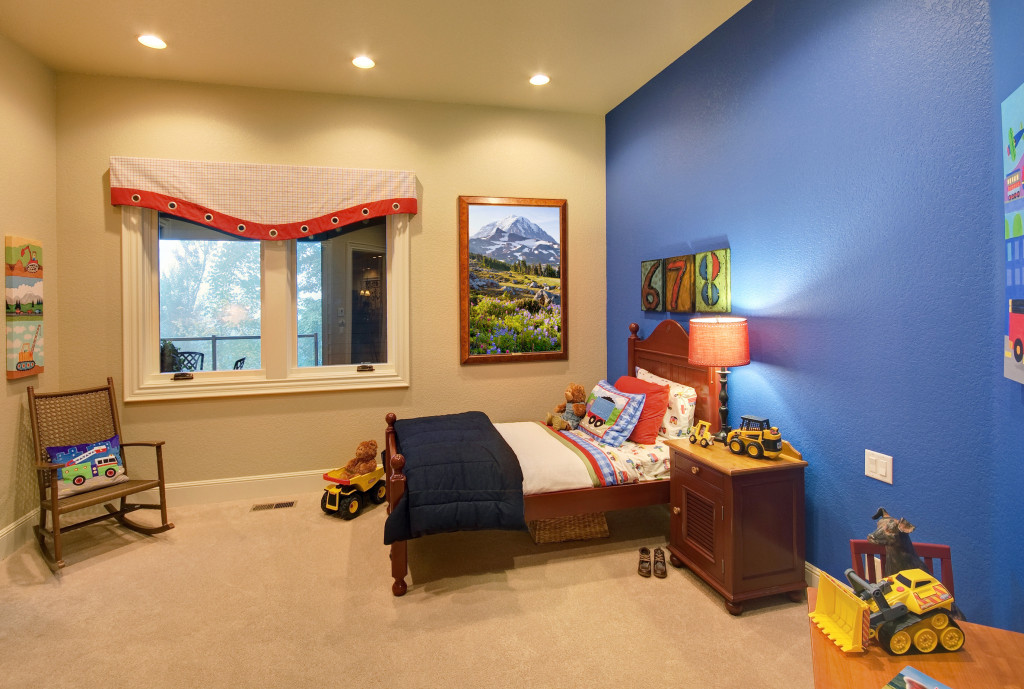- Observe your child’s activities and use them as a guide to create an environment that matches their likes and dislikes.
- Encourage their creativity by creating a space in the home for art or other creative activities.
- Set up playdates for socializing, providing a designated area with proper furniture and toys.
- Create a safe and comfortable environment by decluttering your home, blocking out excess noise, creating an appropriate sleeping area, etc.
- Involve your child in design decisions so that they feel valued and included.
As parents, it’s essential to create an environment at home where your child can feel comfortable, safe, and motivated. Every child is different and requires individual and personalized attention when it comes to their home environment.
Sometimes, it can be challenging to determine what kind of home environment your child needs and how to achieve it. This blog will discuss some tips to help you identify your child’s needs and create a comfortable home environment they can grow in.
Observe Your Child’s Activities.
The first step in identifying the kind of home environment your child needs is to pay attention to their daily activities. Do they prefer quiet spaces, or do they enjoy being in the middle of the action? Do they like to read or play video games?
Observe their habits and behaviors and use them as a guide to create an environment that matches their likes and dislikes. For example, if your child likes to play video games, create a space that is comfortable for them to sit and play in.
Encourage their Creativity.
Children have a lot of creative energy, and it’s essential to encourage and support their imagination. If your child likes to draw or paint, create a space in your home where they can do so. Consider incorporating an art corner or a small art studio where they can let their imagination run wild.
Set up Playdates.

Having friends over is a great way for your child to socialize and play. Observe your child’s personality and identify the activities they enjoy doing with friends. For example, if your child likes to play board games, create a cozy corner for them to do so. If they enjoy playing with Legos, create a designated space with a Lego table and chairs. This will not only create a fun environment for your child but also provide them with an opportunity to develop social skills.
Provide a Safe and Comfortable Environment.
A comfortable and safe environment is crucial for your child’s well-being, as children develop better when they feel secure in their home. Here are the steps you need to take to achieve this:
Make sure your home is clutter-free.
Decluttering your home will help create a space that is appropriate for children. Make sure the furniture and toys are spaced out properly so that your child can move around easily without any obstacles.
Block out excess noise.
Noise can be a distraction for children, so it is essential to create a calm and peaceful environment in your home. If you live in a noisy area, consider investing in soundproofing materials to block out the noise.
Create a comfortable sleeping space.
Your child should have a designated area for sleep and rest. It is essential to create a space with proper lighting, temperature, and ventilation to ensure your child gets enough quality rest.
Ensure safety guidelines are followed.
When it comes to the safety of your child, make sure you follow all safety protocols and guidelines. This includes installing safety gates, setting up smoke detectors, making sure there are no sharp objects, etc.
By creating a safe and comfortable environment for your child, you can ensure they have a nurturing and positive experience at home.
Involve Your Child in Design Decisions.

Involving your child in decisions about their living spaces can help them feel valued and included. Ask for their opinions on colors, furniture, and decor for their room or the common areas in the house.
You should also consider employing the help of a professional interior designer who can help you create an environment that is not only aesthetically pleasing but also meets your child’s needs. A good interior designer will take into account your child’s preferences and create a space that is both functional and enjoyable for them.
Creating a home environment that meets your child’s individual needs can be challenging, but with the right strategies and tools in place, it is possible. By observing their daily activities, encouraging creativity, setting up playdates for socialization, providing a safe and comfortable environment to rest in, and involving them in design decisions, you can create an atmosphere at home where they will thrive emotionally and mentally. With these tips as guidance on identifying what kind of home environment your child needs most, we hope you are now equipped with the necessary information to make this happen.




